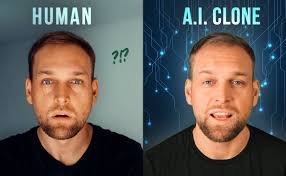Introduction to Smart City Innovation
In 2025, smart city initiatives are reshaping urban living by integrating IoT, traffic AI, and data-driven governance to enhance efficiency, sustainability, and quality of life. The urban infrastructure technology roadmap for 2025–2035 outlines a strategic path to build intelligent cities, with UAE, Singapore, and US leading the charge. From Dubai’s AI-driven traffic systems to Singapore’s Smart Nation framework, Global cities are investing $500 billion annually in smart tech (IDC, 2024). With insights from CityLab and Huawei Intelligent City deployments, this roadmap empowers urban planners and tech integrators. Explore related tech strategies in the AI SaaS Platform Roadmap 2025. Start building smarter cities today.
How Are Intelligent Cities Built?
To address how are smart cities built?, creating an intelligent city requires layered integration of technology and urban systems:
- Data Infrastructure: Centralized platforms aggregate real-time data from IoT sensors.
- IoT Networks: Sensors monitor traffic, waste, and energy, as seen in Singapore’s Smart Nation.
- Traffic AI: AI optimizes flow, reducing congestion by 15% (e.g., Dubai RTA).
- Command Centers: Unified dashboards enable real-time governance, like Huawei Smart City solutions.
Public-private partnerships (PPPs) integrate these with existing infrastructure, ensuring scalability. In the US, cities like Austin leverage PPPs for smart grids, while UAE’s Masdar City uses IoT for sustainability. A clear urban infrastructure technology roadmap ensures seamless deployment.
Urban Infrastructure Technology Roadmap (2025–2035)
This urban infrastructure technology roadmap outlines six phases to build smart cities with IoT and traffic AI.
Phase 1: Urban Needs Assessment (2025)
Identify city-specific challenges:
- Issues: Traffic congestion (30% delays in US cities), waste overflow, energy inefficiencies.
- Citizen Engagement: Use participatory apps like SeeClickFix for feedback.
- Tools: GIS mapping and urban analytics (e.g., ESRI ArcGIS).
This urban infrastructure technology roadmap outlines six phases to build tech-enabled cities with IoT and traffic AI.
Phase 2: IoT Infrastructure Deployment (2026–2027)
Deploy IoT networks:
- Smart Sensors: Install for lighting, waste bins, and air quality (e.g., Libelium sensors).
- Connectivity: Use 5G or LoRaWAN for low-power IoT networks.
- Examples: UAE’s Dubai deploys 10,000+ smart sensors for waste management.
IoT deployments reduced energy costs by 15% in Abu Dhabi (2024 data).
Phase 3: Traffic AI and Mobility Management (2028–2029)
Implement AI-driven mobility:
- Traffic AI: Predictive algorithms optimize signals (e.g., Singapore’s LTA reduced delays by 25%).
- Route Mapping: AI tools like HERE Maps improve navigation.
- Case Studies: Dubai RTA’s AI pilot cut commute times by 10%.
Traffic AI adoption in US cities like LA saved $50 million annually in congestion costs.
Phase 4: Energy and Water Management (2030–2031)
Optimize resources:
- Smart Grids: US’s Austin Smart Grid saves 12% energy.
- Water Systems: Leak detection via IoT (e.g., UAE’s Masdar City).
- Solar Integration: Rooftop panels with AI forecasting.
Masdar City’s smart water systems reduced waste by 20% in 2024.
Phase 5: Data Platforms and Command Centers (2032–2033)
Build centralized systems:
- Urban Dashboards: Real-time analytics, like Huawei Smart City’s Shenzhen hub.
- Digital Twins: Simulate urban scenarios (e.g., Singapore’s Virtual Singapore).
- Alerts: AI-driven notifications for emergencies.
Command centers in Dubai cut response times by 30%.
Phase 6: Public Services and Citizen Apps (2034–2035)
Unify services:
- Citizen Apps: Apps for transport, payments, and complaints (e.g., Singapore’s OneService).
- APIs: Government APIs enable real-time updates.
- Integration: Link with payment systems like Apple Pay.
Singapore’s apps increased citizen satisfaction by 40% in 2024.
Bid for Smart City Contracts
To bid for smart city contracts, tech vendors and startups must:
- Eligibility: GovTech firms, IoT providers, and IT integrators qualify.
- RFP Process: Submit detailed proposals via portals like US’s SAM.gov or UAE’s eProcurement.
- Partnerships: Collaborate with municipalities or firms like Huawei smart City.
- Compliance: Align with GDPR (Singapore, UAE) and NIST (US).
Bidding success in Dubai’s 2024 smart projects reached 70% for prepared vendors.
Spotlight on CityLab
CityLab (bloomberg.com/citylab) is a leading resource for digital city innovation, offering:
- Trend Analysis: Reports on traffic AI and urban sustainability.
- Case Studies: Insights into US cities like New York’s LinkNYC.
- Guides: Strategies for bid for smart urban hub contracts.
CityLab’s 2024 report highlighted Singapore’s Smart Nation as a global benchmark, guiding planners to adopt IoT and AI.
Branded Case Study: Huawei Smart City
Huawei Smart City powers urban innovation:
- Technologies: 5G, IoT sensors, and AI command centers in Shenzhen and Dubai.
- Impact: Shenzhen’s traffic flow improved by 20%; Dubai’s smart policing cut crime by 15%.
- Concerns: Data privacy debates require robust governance (e.g., GDPR compliance).
Huawei Smart City’s scalable platforms support UAE and Global urban projects.
Global Smart City Case Studies (UAE, Singapore, US)
- UAE: Dubai’s RTA uses traffic AI for real-time signal control; Abu Dhabi’s Masdar City leverages IoT for zero-waste goals.
- Singapore: Smart Nation integrates IoT for smart homes and transport, reducing energy use by 25%.
- US: New York’s LinkNYC offers free Wi-Fi; Austin’s smart grid saves $10 million annually; LA’s open data optimizes traffic.
These cases show digital city scalability across Global regions.
Challenges and Future Projections
Challenges in smart city development:
- Data Privacy: GDPR compliance critical in UAE, Singapore.
- Interoperability: Diverse IoT systems need standardization.
- Citizen Trust: Transparency in traffic AI and data use.
Future trends include 6G networks, metaverse interfaces, and predictive governance by 2035, per CityLab.
Conclusion: Building Smarter Cities
The urban infrastructure technology roadmap for 2025–2035 empowers cities to become intelligent, sustainable hubs. By deploying IoT, traffic AI, and unified apps, UAE, Singapore, and US cities lead the way. Stakeholders must bid for smart city contracts and leverage CityLab and Huawei Smart City insights. Start now to shape a connected, green urban future.








